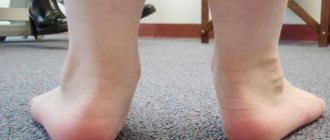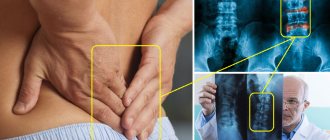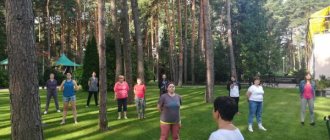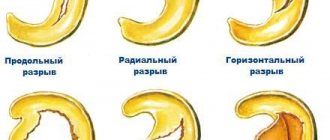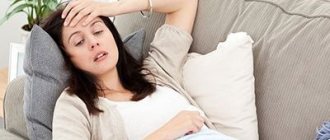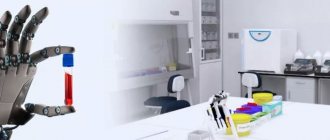What does kyphosis mean? This is a curvature in the upper spine. The disease is pathological, but it is also possible that it develops against the background of a physiological abnormality. In the first case, development is observed in the thoracic region. As the nerve roots are compressed, pain occurs, the body suffers, its functionality is impaired, weakness in the legs and pelvic disorders appear. The severe form occurs with complications in the functioning of the lungs and heart. Diagnosis takes place in the form of examination, laboratory tests, and radiography.
In order for a doctor to accurately diagnose thoracic kyphosis, the angle of curvature must be from 45°. This is already a pathology, a deviation from the norm. The disease develops both independently and against the background of other diseases, for example, scoliosis. Most often, thoracic kyphosis develops as a result of a vertebral fracture.
There are several types of kyphosis: arcuate and angular. If the patient is sick with tuberculosis, then the appearance of angular kyphosis is possible. This type is characterized by protrusion of the chest and the appearance of a hump. If the kyphosis is arched, then the entire thoracic spine is deformed and a C-shaped defect is formed.
Are you experiencing symptoms of kyphosis?
Only a doctor can accurately diagnose the disease. Don't delay your consultation - call
Causes
If something went wrong with the development of the fetus during pregnancy, then it is possible that in the future the baby will have a deviation in the form of a curvature of the spine. Kyphosis is also caused by heredity, surgeries performed on the spine, and various injuries.
Take into account! In the absence of physical activity, for example, if you do not play sports or do exercises, the muscles lose tone and become weak, and this leads to the development of spinal kyphosis.
Thoracic kyphosis is often diagnosed in older women; it occurs as a result of compression fractures of the thoracic vertebrae. Such a fracture occurs against the background of decreased bone density and the development of osteoporosis.
Spinal kyphosis can develop with the progression of infectious diseases; cases of kyphosis with spinal tumors are isolated. In rare cases, in practice there are diseases that appeared as a result of radiation therapy (especially children are at risk if they underwent radiation therapy at an early age).
Kyphosis of the cervical or thoracic spine negatively affects the functionality of the entire body and the functioning of many organs. The body reacts especially sharply in the acute form of the disease. In addition to pain, patients complain of disruptions in the functioning of the heart, constipation, as there is pressure on the abdominal cavity, and the pelvic organs suffer.
Forecast
A large curvature of the thoracic spine affects both the health and anatomy of the spine and the organs located nearby. Due to the reduction in the size of the chest, the volume of the lungs decreases, and accordingly, the functioning of the circulatory system and its dependent systems is disrupted, since an insufficient amount of oxygen is supplied.
Pressure from the diaphragm disrupts the functioning of the abdominal organs, causing constipation. The load on the spine is redistributed, subjecting the intervertebral discs to deformation and provoking the development of osteochondrosis. Severe kyphosis can lead to compression of the spinal roots, as evidenced by symptoms such as partial or complete loss of sensation, impaired functioning of the pelvic organs and muscle weakness.
Classification
Traumatologists and orthopedists give a classification of pathological kyphosis. It can be congenital, functional, paralytic, degenerative, post-traumatic, juvenile.
When contacting JSC “Medicine” (clinic of Academician Roitberg), after examination, a specialist will take into account the angle of curvature and only after that will determine the degree of the disease. Kyphosis may be normal, with an increased or decreased angle. If the patient has been diagnosed with increased kyphosis, then its degree is already determined:
- I – curvature angle 35°;
- II – curvature angle from 31 to 60°;
- III – angle of curvature 60° or more.
In order to correctly make a diagnosis and determine the degree of kyphosis, doctors at JSC “Medicine” (academician Roitberg’s clinic) conduct a number of studies using modern techniques and modern equipment.
Kinds
There are several types of kyphosis in adults.
Functional
This is incorrect posture, which is formed with deviations as a result of insufficient muscle tone. Pathology can also develop against the background of psychological disorders. When the disease is diagnosed, the patient is prescribed a set of simple exercises, and the doctor also recommends sleeping on a hard surface. Patients are required to lie, sit, and walk correctly.
Youthful
It is difficult to say exactly for what reasons this deviation develops. At the same time, experts were able to establish that the development of this type is influenced by heredity. Also the cause is many micro fractures of the spine. The kyphosis angle can reach 75°.
Congenital
Occurs when there are developmental disorders of the fetus at the time of formation of the vertebrae. Against this background, other diseases may develop.
Paralytic
If you damage the back muscles or cut them, this will lead to paralysis. In this case, kyphosis may be accompanied by other diseases, such as scoliosis. It is treated with a conservative method, the patient is prescribed massage and physical therapy.
Post-traumatic
If the patient has suffered a fracture of the lumbar, cervical, or thoracic vertebrae, this can lead to the development of kyphosis. This is the situation most patients encounter, accounting for about 40% of cases. Not in all situations, such injuries lead to kyphosis; it all depends on the level of severity, the nature of the damage, and the injury. Also, post-traumatic kyphosis can be the result of a neurological disorder. It is treated mainly with surgical intervention, but it all depends on the age of the patient and his general condition.
Symptoms
The fundamental factor is the degree of curvature.
- Stage 1 kyphosis is characterized by fatigue and mild muscle pain, mainly at the end of the day. You can also observe poor posture and stooping.
- Kyphosis 2 degrees, when the kyphosis worsens and is complemented by compensatory lordosis, pain and stoop increase, the head and shoulders drop down.
- Kyphosis of the 3rd degree is accompanied by limited mobility of the spine, disturbances in the functioning of internal organs appear as a result of their compression by the deformed chest.
Diagnostics
By contacting JSC “Medicine” (academician Roitberg’s clinic), patients receive a full consultation, the doctor conducts an initial examination, communicates with the patient, which allows him to learn about the symptoms, condition, and well-being. Only after obtaining a complete picture is treatment prescribed.
Previously, the patient undergoes a number of procedures:
- inspection;
- laboratory research;
- ultrasound examinations;
- computed tomography;
- MRI.
An important role in making a diagnosis is played by communication with the patient, from whom the specialist learns about the development of the disease, how and when the problems began, how long the disease lasts, what new symptoms have appeared recently, what treatment was used before, whether the disease is accompanied by pain. The back and neck must be palpated to determine how well the muscles are developed and how sensitive the skin is. Also, the doctor is faced with the task of determining the neurological status; for this, a number of tests are performed.
Another mandatory stage of the study is radiography (this is one of the most important stages). They take pictures both straight and side or aimed. The perspective can be different, even non-standard - this is all so that the doctor can get a complete picture, predict the further development of the disease and prescribe the most effective treatment.
Taking medications
Many medications that are used to eliminate the symptoms and consequences of kyphosis strengthen bones and have a preventive effect on bone tissue. Kyphosis can cause damage to various organs and systems, so all medications should be selected depending on which internal organ suffers from spinal curvature. However, all drugs for the treatment of kyphosis are presented:
- painkillers;
- anti-inflammatory;
- antispasmodics;
- as well as chondoprotectors that restore bones and cartilage;
- local agents that have a warming effect;
- vitamin complexes, the main task of which is to maintain immunity;
- biologically active substances that improve metabolism.
Treatment
Surgery is the most extreme case; in general, treatment of kyphosis is a conservative method. Exercise therapy is often prescribed for kyphosis; it is carried out by qualified doctors at the medical center. The patient is also prescribed massage, wearing a corset, physiotherapy and manual therapy.
In order to reduce pain and alleviate the patient's condition, wearing a corset is prescribed. But this is in extreme cases and for a short period, because the corset is unable to correct posture, while it contributes to weakening of the muscles, and this will only aggravate the development of the disease.
There are cases when conservative treatment does not give the desired result, the disease begins to progress, developing into a new degree of severity. In this case, surgery is prescribed. The main indications for surgical intervention include:
- severe pain, which cannot be relieved with conservative treatment methods;
- rapid development of the disease, when the angle of curvature becomes greater than it was before conservative treatment;
- a cosmetic defect that cannot be eliminated using conventional treatment methods.
If back kyphosis prevents a person from leading a full life, going to work and performing professional duties, an operation is prescribed, the purpose of which is not only to improve appearance, for example, to reduce the angle of curvature, but also to do everything possible to prevent the disease from progressing in the future.
Before the operation is performed, the patient is fully examined and the tolerance to anesthesia is determined. General anesthesia is given. After the first operation, it will become clear whether additional surgical interventions will be required or not. The postoperative period is also important; doctors monitor the body’s reaction – whether it rejects the metal structures used or not. If the body does not perceive them as a foreign body, then the structure that fixes the spine can stand for several years.
Scoliosis, kyphosis, stoop, Scheuermann's disease.
There are many types of postural disorders. But the most common posture disorders, which can be found in approximately every fifth person, are scoliosis, that is, curvature of the spine, and kyphosis, a stooped posture.
Non-specialists often confuse these two concepts. Meanwhile, scoliosis and kyphosis are not the same thing .
Scoliosis is a curvature of the spine to the right or left relative to its axis. The most common types of scoliosis are the thoracic and lumbar spine. Scoliosis is an asymmetry of the body, not only the curvature of the spine, but also protruding shoulder blade or ribs on one side (right or left).
Kyphosis is a stooped position, excessive curvature of the spine in the thoracic region. With kyphosis, the relative symmetry of the body is preserved.
Although in fairness it must be said that sometimes kyphosis (stoop) is aggravated by scoliosis. This combination is called kyphoscoliosis. But in general, kyphosis and scoliosis are different conditions and should be considered separately.
Note from Dr. Evdokimenko. Since even a healthy spine has a slight kyphosis in the thoracic region, it would be more correct to call stooping hyperkyphosis. But since the term “kyphosis” has already been established in relation to stoop, you and I will also use this not entirely correct definition.
Below I will tell you in detail about kyphosis, which is often a consequence of Scheuermann's disease. And if you need more detailed information about scoliosis, you can get it on the website of therapeutic exercise specialist Lana Paley:
Types of scoliosis and causes of scoliosis: what causes curvature of the spine to the right or left relative to its axis. Scoliosis of the thoracic and lumbar spine.
Consequences of scoliosis for health, complications of scoliosis: dysfunction of internal organs in scoliosis. Myths about the health consequences of scoliosis.
Treatment of scoliosis: special gymnastics, manual therapy, wearing corrective corsets, breathing exercises using the Katharina Schroth method.
Scheuermann's disease: kyphosis, stoop, juvenile osteochondrosis
The roots of most problems associated with the spine go back to our youth, and with age they only get worse and become more noticeable. This can be most clearly demonstrated using the example of Scheuermann's disease.
Scheuermann's disease (juvenile osteochondrosis, kyphosis, stoop) is a very common disease, the second most common of all chronic back diseases. Scheuermann's disease affects 5% of the population in a severe form, and almost every fifth person on the planet suffers from a mild form!
And at the same time, Scheuermann's disease has been little studied. When I began studying Scheuermann's disease 15 years ago, I was confronted with a distinct lack of literature on the disease, which seemed rather strange given its prevalence. And until now, medical reference books rarely devote more than three to five pages to this disease.
On the Internet, the situation is even more deplorable - some information about Scheuermann’s disease is popping up, but this information is very contradictory, and most often just idiotic! People who write about Scheuermann's disease often do not understand at all the principles of its appearance and development! And they even confuse hyperkyphosis (Scheuermann's disease) with scoliosis!
Even more strange is that the mechanism of development of Scheuermann's disease is practically not understood by most doctors, and even those specialists who know about it most often have little idea of how to treat this disease. I believe that we need to fill this gap. Below I will discuss in detail the causes, development, symptoms and treatment of Scheuermann's disease.
Causes of stoop, kyphosis and Scheuermann's disease
Stooping can occur for a number of reasons: due to severe rickets suffered in childhood, due to serious chronic diseases that weaken the child’s body; due to congenital weakness of the back muscles; due to reflex tension of the pectoral muscles; due to a prolonged bent position of the body (at a machine, at a desk, etc.).
But most often, stooping first appears in adolescence, during the period of active growth, that is, at 11-15 years. And the most likely to “get” stoop and Scheuermann’s disease are teenagers who have grown more than others during their growth period. That is, people who have “stretched out” to a tall height suffer from Scheuermann’s disease somewhat more often than people of short and average height.
In addition, those most susceptible to teenage stoop are slender and “thin-boned” teenagers who do not have a strong muscle corset and have not inherited wide, strong bones.
Naturally, children and adolescents who lead an inactive lifestyle and prefer sitting at books or a computer to physical activity are also at risk. And also children and teenagers who are emotionally “squeezed” and prone to sadness; teenagers who are often bullied at home or at school; teenagers who are burdened with too many responsibilities from an early age.
Observation of Dr. Evdokimenko. Children, teenagers and young people of both sexes, living in prosperous families, but “under the supervision” of overly domineering or overly controlling parents, slouch especially often. Such parents, without realizing it, put constant pressure on the child’s psyche with their demands, claims or high expectations. “Be like this... Achieve this... You must become... You must study straight A's... In our family everyone has a higher education (all professors, academics, geniuses - underline what is necessary)... My child is simply obliged...”
In general, continuous “must, must, be, achieve, etc.” Not every person, and especially not a child, is able to live painlessly under such pressure and meet the excessive expectations of their parents. And if the child also initially has increased responsibility and is not able to “kick”, then he constantly lives in colossal stress.
In response to tension and negative emotions, the child reflexively, due to an innate behavioral instinct, takes a so-called passive-defensive pose. A passive-defensive posture is characterized by dropped shoulders, a lowered head, and a hunched back. With frequent repetition, such a pose can become (and often becomes) habitual, firmly anchored in the stereotype of posture.
“Posture expresses the state of the soul,” Russian Army General Gustav Mannerheim liked to repeat. Many psycho-emotional diseases and neuroses are directly related to poor posture. “If you want to have a hunched over sick child, scold and punish him more often, more often force the child to do what he does not like. If you want to raise a child healthy and beautiful, praise him more often and cherish him, like the rarest and most beautiful flower,” says psychologist Pavel Paley.
Development of stoop, kyphosis and Scheuermann's disease
The reasons why Scheuermann's disease manifests itself during the growth period are obvious. At this time, the teenager’s skeleton begins to grow especially quickly. The spine also rapidly stretches, “lengthens.” However, the back muscles do not have time to grow and strengthen at the same speed as the spine grows in length.
As a result, the back muscles appear to be stretched along the elongated spine. Due to the fact that the muscles are stretched along the spine, they are more difficult to contract and perform their supporting function (the function of holding the spine) worse.
That is, the back muscles, being stretched and weakened, do not maintain good posture. The muscles of the thoracic spine (the muscles of the middle of the back) and the interscapular muscles are particularly stretched and weakened.
As a result, it is difficult for a child to stand and sit straight for a long time - the muscles of the thoracic back of such a child quickly get tired, and he begins to slouch.
Due to stooping, the muscles of the thoracic spine are stretched even more; we can say that they partially atrophy. In the most severe cases, the muscles of the thoracic back almost do not support the back at all. And left without muscle support, the vertebrae of the thoracic spine (when carrying heavy objects, jumping, standing, long walking and even long sitting) are subject to increased pressure and flattened in front, which leads to even greater stooping.
As you understand, due to stooping, the static balance of the body is disrupted. But since our body tries to prevent imbalance under any circumstances, it compensates for stooping (that is, an increase in thoracic kyphosis) by counter-strengthening the lumbar curve (lordosis) and contracting the lumbar muscles.
Sometimes this “compensatory” contraction of the lumbar muscles causes a teenager to feel a feeling of heaviness in the lower back at the slightest vertical load - walking, running, standing. In addition, over time, spasm of the psoas muscles can impair the flow of blood from the lower extremities and cause poor circulation in the legs.
The course of the disease in a number of patients can be complicated by displacements of the intervertebral joints in different parts of the spine, which sometimes leads to a noticeable deterioration in well-being (but such displacements, fortunately, do not occur in every patient).
And finally, in the worst case, deformation of the thoracic spine leads to hunchback, “compression” of the chest occurs and a decrease in the respiratory capacity of the chest (lung volume), which contributes to the development of frequent bronchopulmonary diseases.
But, I repeat, it is extremely rare to reach such a deplorable state - only in one patient out of ten. So let's now go back a little and see what happens to the vertebrae of an ordinary patient.
As you know, the condition of bones (their density) depends on the activity of the blood supply, and in the spine, the role of a kind of pump for pumping blood is performed by the back muscles. Due to the fact that with Scheuermann's disease, the “pumping” of blood by the muscles of the middle of the back sharply decreases, the blood supply to the vertebrae deteriorates and they become less durable and are easily “pressed”.
It is with Scheuermann's disease that Schmorl's hernias form (which we talked about in the chapter on disc herniation), sometimes single, and sometimes multiple. In addition, as you already know, with advanced Scheuermann's disease, the vertebrae flatten in the front and take on a typical wedge-shaped shape, making the disease easily recognizable on an X-ray taken from the side.
Now let's digress a little and try to solve the riddle. One of the medical names for Scheuermann's disease is adolescent spinal osteochondrosis .
It’s strange what the respected professors had in mind when they chose the term “osteochondrosis,” which implies a change in the cartilage tissue of the intervertebral discs, if, perhaps, the only thing that is not damaged in the spine during Scheuermann’s disease is the intervertebral discs! They remain so strong that they “manage” to push through the vertebra, that is, they turn out to be stronger than bone!
As you can see, the use of the term “osteochondrosis” is completely unlawful in this case. However, this is far from the first and not the last case in medicine when names are used that incorrectly reflect the essence of the disease.
Symptoms of Scheuermann's disease
The first, earliest symptom of Scheuermann's disease is a feeling of heaviness and fatigue in the back. Moreover, often a child’s complaints about fatigue are perceived by parents as a sign of laziness and are ignored. But it is actually difficult for a child to stand or sit straight for a long time; he wants to lie down to relieve tired back muscles.
As the disease progresses, minor back pain called “fatigue pain” often appears. These pains rarely become intense, so seeking medical attention is usually delayed.
At first, the “fatigue pain” disappears after a short rest. However, over time, rest ceases to bring noticeable relief and the feeling of “heaviness” bothers the child even after sleep. Subsequently, a characteristic external feature becomes noticeable: stooping, which becomes more and more aggravated.
Note from Dr. Evdokimenko. The presence of stoop (kyphosis) is checked against the wall. You need to stand with your back to the wall, press your heels, buttocks, shoulders and the back of your head against the wall. A child with correct posture will fulfill such a request easily, as if it were something natural. A stooped child suffering from Scheuermann's disease will have to make a noticeable effort to press the back of his head and shoulders against the wall, without lifting his heels and buttocks from the wall. In addition, when externally examining a stooped child, we are immediately struck by his drooping shoulders and protruding or somewhat saggy belly.
Gradually, limited mobility in the thoracic spine and shortening of the lumbar muscles are added to the first symptoms. If, due to shortening and spasm of the lumbar muscles, the passage of blood to the lower extremities worsens, then after exercise or when the weather changes, the teenager’s legs begin to “twist”. My legs “twist” especially badly at night.
Sometimes painful spasms of the muscles of the lumbar region and displacement of the vertebrae of the thoracic spine occur, which can lead to attacks of noticeable pain in these areas of the back.
The peak of the disease occurs between sixteen and twenty years of age, after which, oddly enough, the condition of many sufferers improves somewhat: after all, the formation of the skeleton by this age is basically completed, and the body adapts to incorrect posture.
The relatively prosperous period lasts 10-15 years, but from about the age of thirty-five, if no measures are taken, the state of health slowly deteriorates again. After all, at this age, the natural reserve of strength dries up, and most thirty- to thirty-five-year-old people do not engage in maintaining good physical shape.
Without proper treatment, changes in well-being - sometimes improvement, sometimes worsening - accompany the patient throughout his life, but one thing remains unchanged - stooping and a feeling of constant fatigue in the back and legs.
In old age, circulatory problems in the lower extremities may occur, which is manifested by decreased sensitivity of the legs and difficulty walking; feet are constantly cold - blood has difficulty passing to the tips of the toes. The skin of the legs becomes dry, rough, and sometimes trophic ulcers form on the legs. But, fortunately, this does not come to this very often, only in extremely advanced cases.
Examination for kyphosis and Scheuermann's disease
In typical cases, the clinical picture of Scheuermann's disease is so characteristic that clarifying the diagnosis does not present any difficulties - an X-ray of the thoracic spine is sufficient. On an x-ray, a competent doctor can easily recognize Schmorl’s hernias and wedge-shaped deformities of the vertebrae of the thoracic spine.
Other examinations are carried out when there is any doubt, for example, when Scheuermann's disease is accompanied by atypically severe pain. Magnetic resonance imaging and blood tests may then be required to rule out other concomitant spinal pathologies.
By the way, it will be useful for parents of boys to know that the detection of a wedge-shaped deformation of 2-3 vertebrae on an x-ray of the spine or the presence of several Schmorl’s hernias can serve as a basis for exemption from military service.
Combating stoop, treating kyphosis and Scheuermann's disease
The classical treatment of Scheuermann's disease according to medical textbooks looks rather strange, given the development of the disease. For example, it is customary to prescribe chondroprotectors to such patients - drugs for the treatment of cartilage tissue. The logic of such prescriptions is completely inexplicable, because cartilage is practically not damaged in Scheuermann’s disease!
Physiotherapy is often prescribed - usually to relieve pain or improve circulation - which, of course, is an important, but secondary goal.
Gymnastics, which is recommended by most textbooks and “wanders” from book to book, is monstrously illiterate! - after all, it mainly consists of stretching exercises. And this is doubly surprising, because with Scheuermann’s disease the muscles are already overstretched and weakened in the middle back.
But what strikes me most is the advice of many authors to constantly wear a corset to correct their posture. Of course, as long as the patient wears a corset, the appearance of improvement is created. But the muscles under the corset become unaccustomed to the load - and some time after the corset is removed, the posture worsens even more. All this is quite sad, considering that such treatment of the disease is practiced by most government medical institutions.
But the situation is much worse when treating Scheuermann's disease in many commercial medical centers. Even after making the correct diagnosis (which does not always happen!), doctors at paid centers strive to prescribe the most “commercially reasonable” treatment to the patient - a large number of procedures are performed, and the “best, newest” medications are prescribed. All this, of course, makes the right impression on the patient, but does not contribute to his recovery at all.
Meanwhile, coping with the manifestations of Scheuermann's disease (or significantly reducing them) is actually not that difficult. You just need to think through each step and act consistently, but at the same time understand that it is impossible to eliminate such a deficiency at once and, unfortunately, there are no magical instant treatment methods.
And yet, with sufficient determination, acting competently, taking into account the causes of the disease, it is almost always possible to achieve significant positive results.
So where to start? If we are talking about a child, you need to choose the right furniture for him to do homework and play (or work) on the computer. The “angle rule” will help you avoid making a mistake in choosing a chair or computer chair: for a sitting person, the lower leg and thigh should form a right angle. Both adults and children would benefit from a work chair with a special convex back that prevents the back from slouching. Another rule: regardless of the type of chair (chair), your feet should rest on the floor and not dangle or be tucked under the chair (chair).
In general, given that at school a child is forced to sit for a long time (at a desk), try to arrange so that at home the child takes a break from a sitting position more often. You can even allow him to prepare his homework while lying down or reclining.
We spend about a third of our lives sleeping. Therefore, it is very important to choose the right mattress for your bed or sofa. The mattress should be quite dense and even (a mattress that is too soft, and even more so a sagging mattress is absolutely not suitable for a child suffering from Scheuermann's disease).
However, remember that recommendations requiring sleeping on boards or a wooden board are already outdated. Of course, if normal treatment is not carried out, there is nothing else left to do but come up with such executions, but they will not solve the problem. What can really help is properly selected therapeutic exercises.
Therapeutic gymnastics is the main, most important and most necessary method of treatment: it ensures 80% of success in the treatment of Scheuermann's disease.
First of all, as you understand, you need to strengthen the muscles of the middle back (thoracic spine).
To a much lesser extent, with Scheuermann's disease, the muscles of the neck and lower back are strengthened. But you must definitely pay attention to the gluteal muscles, which are almost always weakened in such patients. It has been noticed: the stronger the gluteal muscles, the easier it is for a person to maintain correct posture.
Strengthening exercises, which are given in Chapter 21, must be done for Scheuermann's disease for at least 40 minutes, strictly every other day or at least 3 times a week. There is no need to do such exercises every day - otherwise the muscles will not have time to rest and recover. But doing them less than 3 times a week is practically pointless: then the muscles will not be able to strengthen properly.
In addition to strengthening exercises, 10-15 minutes a day should be devoted to stretching exercises for the lumbar muscles to reduce their spasm and tension.
The minimum result from gymnastics can be expected no earlier than 2-3 months, and to achieve a lasting effect you need to practice for at least six months to a year, after which you can reduce the duration of exercise to 30 minutes (3 times a week).
Of course, this is an average approximate lesson plan. In fact, any treatment (and gymnastics is also a treatment!) must be prescribed and prescribed by a doctor, taking into account the stage of the disease and the patient’s condition. In general, I would like to warn any potential patient against amateur activities, even in the field of gymnastics: you can also harm yourself with gymnastics if you do it incorrectly and inappropriately.
And although I have collected in this book exercises that I consider extremely useful for back diseases and Scheuermann's disease, before you start doing them, consult with your doctor. He may have reasonable objections, especially if there are any contraindications for gymnastics related to the condition of your body.
However, for those who do not have the opportunity to consult a doctor, in conclusion I will say two words about what kind of gymnastics should never be done with Scheuermann’s disease.
I categorically forbid a person who wants to improve his posture from doing exercises aimed at strengthening and “pumping up” the chest muscles. After all, being strongly “pumped up”, the pectoral muscles pull the shoulders forward, which further aggravates the stoop.
At one time, when I was 18 years old, I also noticeably stooped. The stooped position gave the misleading impression that my pectoral muscles were not developed enough, so my sports trainer constantly demanded: “pump up your chest.” That's what I did. As a result, my shoulders pulled further and further forward, I slouched even more, and my chest “sank” - which is why my pectoral muscles visually became smaller and smaller. That is, the more I trained my pectoral muscles, the worse they looked.
Only over time I realized the mistake and began to do the exact opposite: I left the pectoral muscles alone and began to strengthen the interscapular muscles, the muscles of the middle back. After about six months, my posture improved noticeably and my chest expanded. Then it turned out that my pectoral muscles had been quite developed all this time. It’s just that before, against the backdrop of the “sunken” chest, they shrank and seemed smaller than they are.
The most curious thing is that mistakes similar to the one described above by my coach are still made by about half of the coaches or physical education instructors.
The second common mistake of sports teachers is that they often recommend to slouched people various exercises with weights: kettlebells, barbells, etc. But since in Scheuermann’s disease the muscles do not support the back, almost the entire load falls directly on the thoracic vertebrae. The result is increased deformation of the vertebrae, their flattening and multiple Schmorl hernias.
Attention! With Scheuermann-Mau disease, all exercises performed with weights (more than 10 kg) can only be done while lying down.
Back massage for Scheuermann's disease is used to restore blood circulation in the muscles and is especially useful in combination with gymnastics. In this case, massage accelerates the recovery and metabolic processes in the muscles after exercise, and in addition, increases muscle tone and strength. After a massage session, many patients note that they can stand straighter and find it easier to hold their back.
Of course, you need to understand that you cannot achieve results with just a massage, and in addition, with Scheuermann’s disease, it is advisable to do massage regularly, at least 2-3 courses per year for 8-10 sessions. Due to the relative high cost of the procedure, not everyone can afford it. Therefore, it turns out that only gymnastics can be better than gymnastics, and massage is only an optimal addition to it.
Postisometric relaxation (PIR) for Scheuermann's disease is required in cases where there is spasm and shortening of the lumbar muscles. There is no other method that can better stretch and relax the lower back muscles. Therefore, post-isometric relaxation is necessary for almost half of the patients, and some of them require a fairly large number of such procedures - from 6 to 8 sessions, carried out 2 times a year.
Manual therapy for Scheuermann's disease, on the contrary, is used minimally, and only when there are displacements of the intervertebral joints in some specific areas and when the patient is ready to do gymnastics in the future. Otherwise, the patient’s condition may even worsen over time - manual manipulations carried out too actively by such patients, with weakened muscles and ligaments, can cause further “loosening” of the spine.
I remember such a sad example. Once at my appointment there was a young man who had been treated at one of the commercial centers. He went there with complaints of moderate pain in the thoracic spine, and the center’s doctors immediately got down to business: they conducted six sessions of manual therapy, without prescribing either gymnastics or massage. Therefore, although the patient’s condition initially improved briefly, after a month the pain returned and became even stronger. The young man turned to the same center again - and everything happened again. In total, the patient managed to undergo twenty-five (!) manual therapy sessions over six months. The result was sad: the young man’s spine resembled a bunch of hinges: it seemed that he could bend as he liked in any direction, but was absolutely unable to fix and maintain the position: his back got tired and began to hurt almost immediately.
As a result, where timely treatment would have taken three to four months, we had to work for almost another year, and it took enormous effort from the patient himself to finally correct the situation.
In order to avoid similar mistakes, for the past five years I have been conducting a preliminary conversation with patients even before prescribing manual therapy: I must be sure that after performing manual manipulations, the patient will follow the recommendations for therapeutic exercises. Otherwise, responsibility for the failure of treatment lies not only with the patient who refused to work, but also with me.
In most cases, medications are not needed for Scheuermann's disease. Only when the destruction of the vertebrae has gone too far and there is a possibility of further deterioration of the spinal bones, do I still recommend medications to patients to strengthen the skeleton.
These could be either vitamin D supplements or other medications to strengthen bones. However, it must be borne in mind that most of these medications are intended only for patients over 18 years of age. Younger patients can be offered fish oil that they “hate” (it is now available not only in liquid form, but also in capsules: taking them is much easier and more pleasant).
Other treatment methods for kyphosis and Scheuermann's disease , from my point of view, are absolutely not relevant and are a waste of time and money. And in general, as already mentioned, 80% of the key to success in this disease is correctly selected therapeutic exercises, which do not require financial costs or complex special devices. So, no matter how trite it sounds, in this case the patient’s health is the work of the patient himself.
***
Article by Dr. Evdokimenko© for the book “Back and Neck Pain”, published in 2001. Edited in 2011
All rights reserved.
How to make an appointment with a traumatologist-orthopedist
There are several ways to make an appointment with a specialist at our clinic, for example, by calling. If you have a difficult situation, use the phone number to call an ambulance. Specialists will arrive in the shortest possible time, telephone lines work around the clock. You can also make an appointment using the website. On each page you will see an appointment form in the top corner.
JSC "Medicine" (clinic of academician Roitberg) is located in the center of Moscow near the metro stations Belorusskaya, Mayakovskaya, Novoslobodskaya, Tverskaya, Chekhovskaya. Address: 2nd Tverskoy-Yamskoy lane, 10.
Prevention of kyphoscoliosis
The essence of preventive measures is to prevent pathological curvature of the spine. Strengthening the back muscle corset with the help of such sports as swimming, dancing, Pilates helps with this. A contrast shower tones the muscles well.
It is important to ensure the correct position of the body when working at the computer.
Warming up (at least once an hour) helps to relax the muscles. To sleep, you should purchase an orthopedic mattress. Your daily diet should include fish, dairy products, fresh vegetables and fruits.
